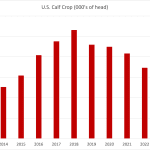Neither snow nor rain nor gloom of night is staying Canadian grain from being shipped to export markets at a rapid pace.
The port of Vancouver has been buffeted by nasty weather for weeks, with heavy rain and even a rare fall blizzard last weekend.
Such weather has been known to halt grain vessel loading to ensure grain doesn’t get soggy, which would lead to problems at destination. But so far, terminal operators have been able to work around the problems and keep grain moving relatively smoothly from rail cars to terminal and into waiting vessels.
Read Also

Canola used in only quarter of Canadian biofuel
Less than one-quarter of the biodiesel and renewable diesel used in Canada in 2024 was made from canola oil feedstock
“They’re keeping their heads above water,” said CWB spokesperson Maureen Fitzhenry, adding the board is watching the situation closely.
“They’ve been able to keep the terminals fluid and we’re still getting rail cars unloaded and returned to the country, and that’s the main concern.”
If vessels were delayed in loading, terminals would eventually become plugged and rail cars would not be unloaded, resulting in financial penalties for shippers and ultimately reduced shipments off the Prairies.
Thanks to an early harvest this year and a late harvest in 2005, exports of grains and oilseeds are well ahead of the pace set a year ago.
As of Nov. 19, wheat exports this crop year are up by about 70 percent to 4.6 million tonnes, durum is up by 19 percent to 1.5 million and canola is up by 32 percent to 1.9 million tonnes.
Total exports of the major grains, oilseeds and pulse crops are up by 29 percent to slightly less than 10 million tonnes. If that pace is maintained throughout the year, total exports would reach 32.5 million tonnes, well above the previous three-year average of 23.1 million.
However, some industry officials say that’s unlikely.
For example, the current pace for canola would result in a year-end total of more then 6.1 million tonnes, compared with Agriculture Canada’s projection of 5.3 million.
Lach Cochburn, west coast operations manager for Cargill, said that while canola exports are off to an excellent start, that will almost certainly tail off later in the year.
“That’s not going to happen ” said Cochburn. “We’ll probably duplicate last year’s exports of between five and 5.5 million tonnes.”
Export shipments of CWB grains are 29 percent ahead of last year at 6.5 million tonnes, with increased wheat and durum shipments offset by a big drop in barley so far.
That pace, which works out to a year-end total of more than 21 million tonnes, won’t be maintained either, as the board is sticking with its export target of 17.5 million tonnes.
















